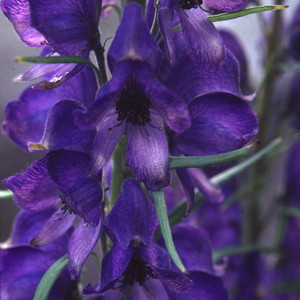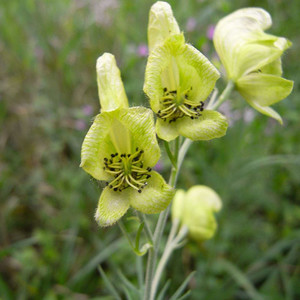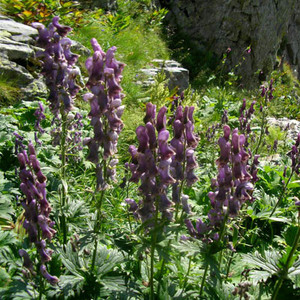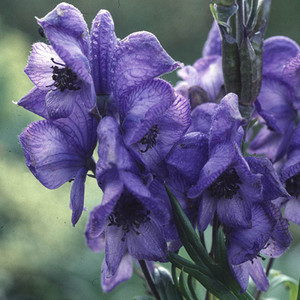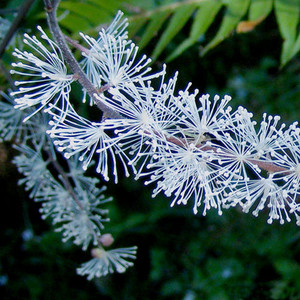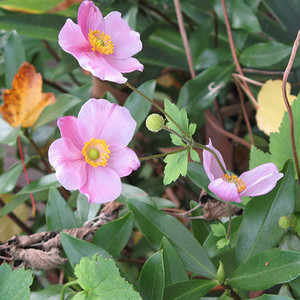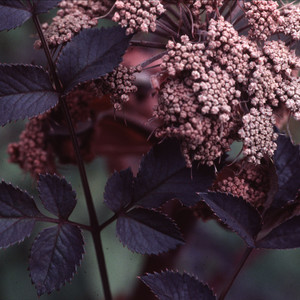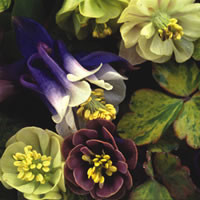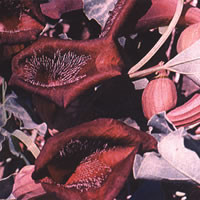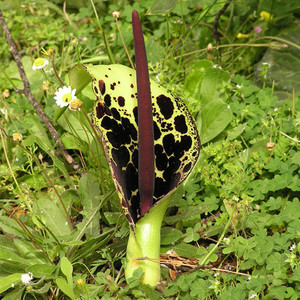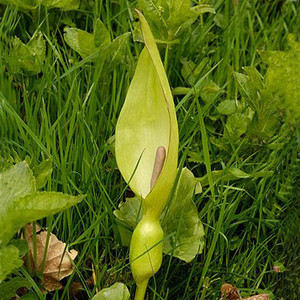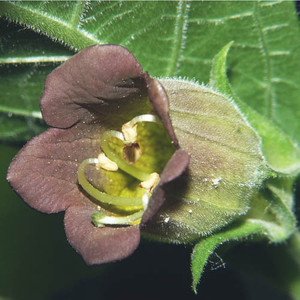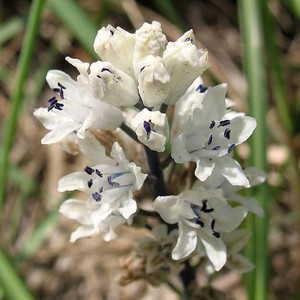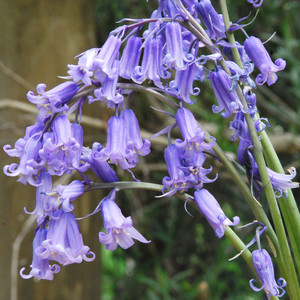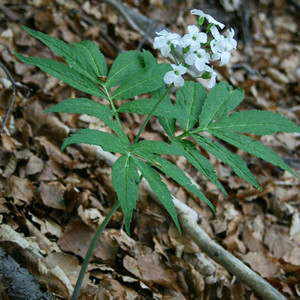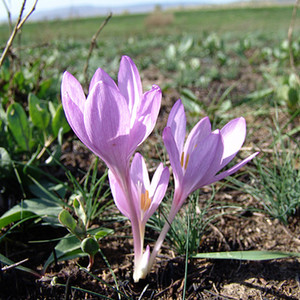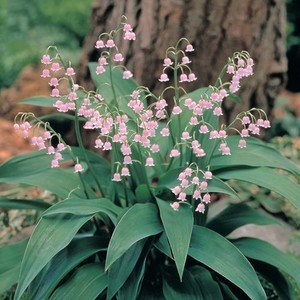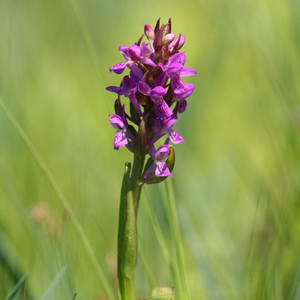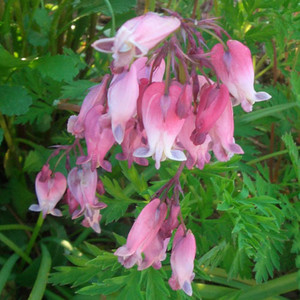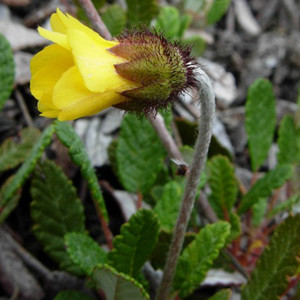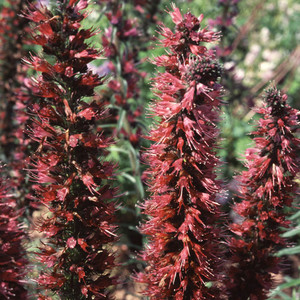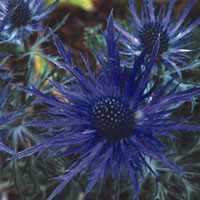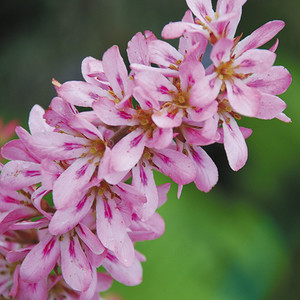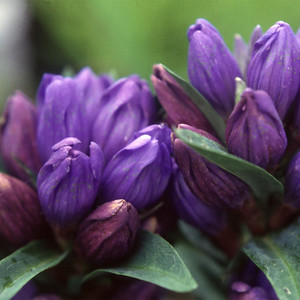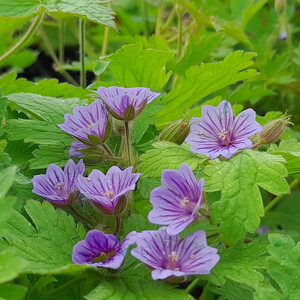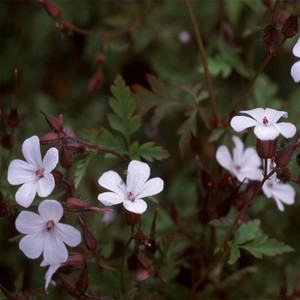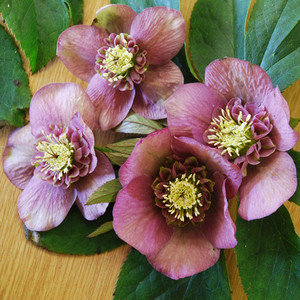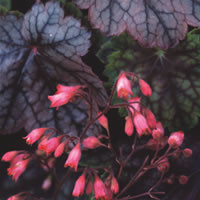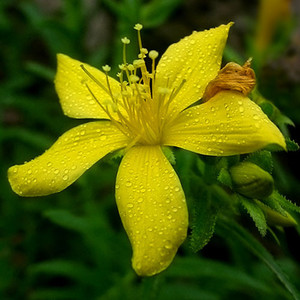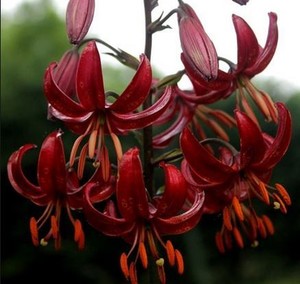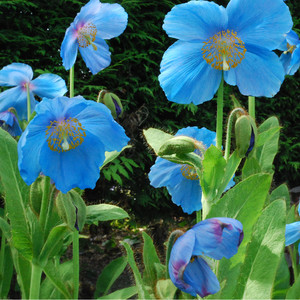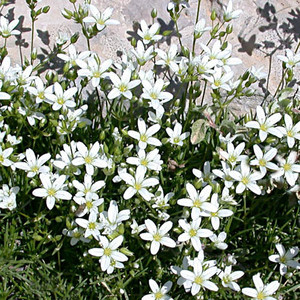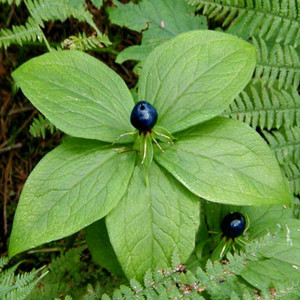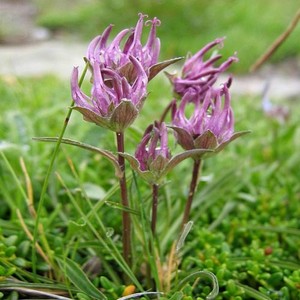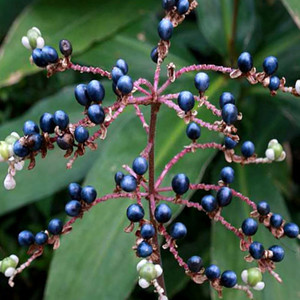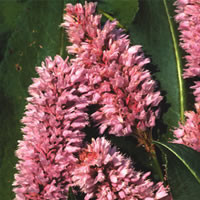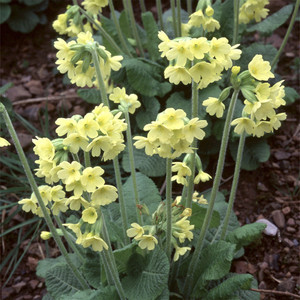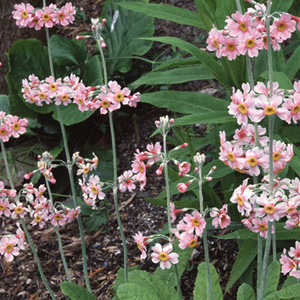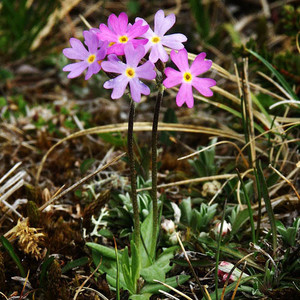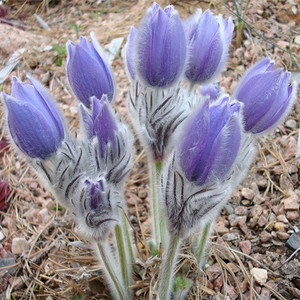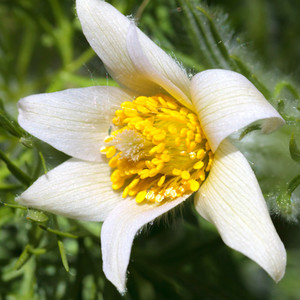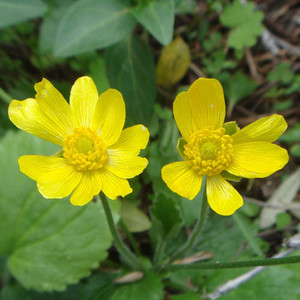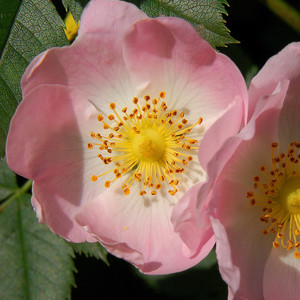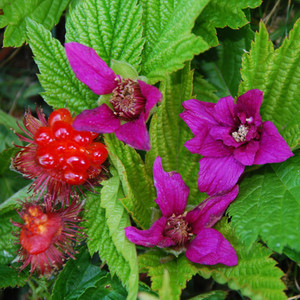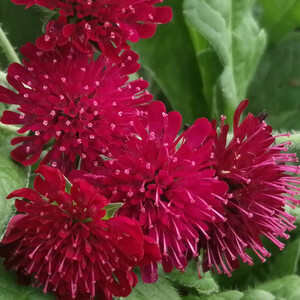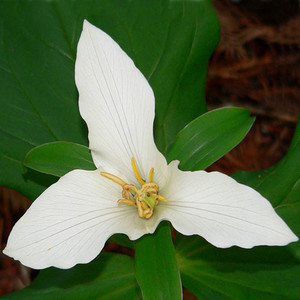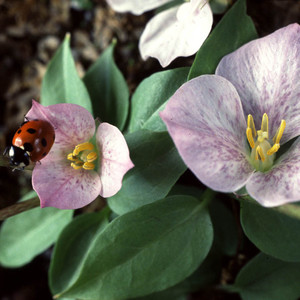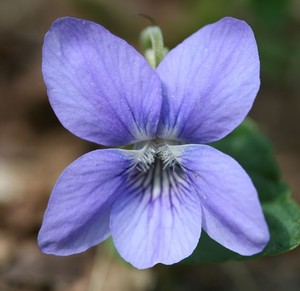-
Nothing here. Please add something or load your cart
-
ACONITUM CARMICHAELII VAR. ARENDSII
This is the rarely-offered, very latest form of any of the "Monkshood" plants to flower here at Plant World. It's a cross between A. carmichaelii and A. carmichaelii var wilsonii and the long stems produce buds in August and September with the deepest inky blue flowers opening still later. These magnificent spikes of extraordinarily large flowers are only damaged by the first frosts in late October and November. Few good seeds collected. ... Learn MoreSowing Advice: For best results, sow seeds as soon as you receive them onto a good soil-based compost. Cover the seeds with fine grit or compost to approximately their own depth. These seeds can be very slow indeed to germinate, and may wait for spring before emerging whenever sown. Do not use artificial heat to try to germinate them as it will simply disrupt their germination mechanism. Please be very patient, and do not discard the seed pan.1 packet @ £2.66 each
-
ACONITUM KIRINENSE
Primrose-yellow, darker-anthered "monkshood" flowers open on short stems on this rare gem from the mountain slopes and forest margins of China, Korea and Eastern Russia. Very doubtfully in cultivation, it is a far superior plant to its relative, Aconitum lycoctonum, being shorter and more compact in stature, as well as having flowers which are outward-facing rather than pendent. ... Learn MoreSowing Advice: Sow seeds IMMEDIATELY you receive them, at any time of the year, they depend on having several months in cold, damp compost, (NOT DRY IN A FRIDGE) before they will germinate. Keep the seed tray moist in a cold greenhouse or shady corner. These fresh seeds can be very slow to germinate. Do not use any artificial heat in an attempt to germinate them as it may cause them to enter even deeper dormancy.1 packet @ £2.61 each
-
ACONITUM LYCOCTONUM ssp MOLDAVICUM
This is an unusual colour variant on the normal creamy-white form of Aconitum lycoctonum that bears strong spikes of purple-grey flowers shaded with cream at the mouth and dusky violet on the spur. As such it makes quite a change from the usual run-of-the-mill varieties. It is a local and regional Carpathian endemic from the nemoral belt of the mountains and taller hills. ... Learn MoreSowing Advice: For best results, sow seeds as soon as you receive them onto a good soil-based compost. Cover the seeds with fine grit or compost to approximately their own depth. These seeds can be very slow indeed to germinate, and may wait for spring before emerging whenever sown. Do not use artificial heat to try to germinate them as it will simply disrupt their germination mechanism. Please be very patient, and do not discard the seed pan.1 packet @ £2.66 each
-
ACONITUM NAPELLUS
The true "Monkshood" flowers from earliest spring, producing indigo-blue hooded flowers on strong stems clad in shiny green leaves. This is one of the earliest, easiest and most rewarding flowers you can grow in the garden and is totally trouble-free, making a strong, long-lived, bone hardy and totally non-invasive clump. ... Learn MoreSowing Advice: For best results, sow seeds as soon as you receive them onto a good soil-based compost. Cover the seeds with fine grit or compost to approximately their own depth. These seeds can be very slow indeed to germinate, and may wait for spring before emerging whenever sown. Do not use artificial heat to try to germinate them as it will simply disrupt their germination mechanism. Please be very patient, and do not discard the seed pan.1 packet @ £2.39 each
-
ACTAEA ELATA
Beautiful spray like clusters of showy white flowers form conspicuous, long, bottlebrush-looking flower heads, very late in the year when most other flowers have long-gone. Found in north western USA and western coast of Canada it has many medicinal and other properties, for example it is reputed to repels insects, hence its name "Bugbane". Unlike other members of the genus Actaea most of which bear berries, the few seeds are produced in green pods, resembling those of aconitums. ... Learn MoreSowing Advice: For best results, sow seeds as soon as you receive them onto a good soil-based compost. Cover the seeds with fine grit or compost to approximately their own depth. These seeds can be very slow indeed to germinate, and may wait for spring before emerging whenever sown. Do not use artificial heat to try to germinate them as it will simply disrupt their germination mechanism. Please be very patient, and do not discard the seed pan.1 packet @ £2.66 each
-
ANEMONE HUPEHENSIS 'SEPTEMBER CHARM'
This anemone brings valuable colour to the garden in late summer and autumn, with masses of large, rosy pink, cup-shaped flowers on tall, wiry stems from July to September. One of the most reliable and free-flowering of the Japanese anemones, these have distinctive purple-tinted stems, and outer petals which contrast beautifully with the pale pink inner petals. They are perfect for areas of partial shade towards the back of a moist herbaceous or mixed border. The branching stems of poppy-like flowers are superb for cutting. Seedlings may vary but all will be lovely. ... Learn MoreSowing Advice: Sow seeds IMMEDIATELY you receive them, at any time of the year, they depend on having several months in cold, damp compost, (NOT DRY IN A FRIDGE) before they will germinate. Keep the seed tray moist in a cold greenhouse or shady corner. These fresh seeds can be very slow to germinate. Do not use any artificial heat in an attempt to germinate them as it may cause them to enter even deeper dormancy.1 packet @ £2.48 each
-
ANEMONOPSIS MACROPHYLLA
A stunning Japanese treasure. Above the mid green leaves arise airy sprays of impossibly beautiful nodding flowers. Seemingly carved from wax, like pendent water-lilies, each displays a wondrous double circle of petals, the outer one an almost pure ivory white, whilst the centre is purplish-blue. Totally hardy, these fabulous plants will excel in shade and well-prepared organic soil. Very few good seeds collected. ... Learn MoreSowing Advice: Sow seeds IMMEDIATELY you receive them, at any time of the year, they depend on having several months in cold, damp compost, (NOT DRY IN A FRIDGE) before they will germinate. Keep the seed tray moist in a cold greenhouse or shady corner. These fresh seeds can be very slow to germinate. Do not use any artificial heat in an attempt to germinate them as it may cause them to enter even deeper dormancy.1 packet @ £3.47 each
-
ANGELICA SYLVESTRIS EBONY
This fabulous new bee and butterfly plant is the darkest of any angelica we have ever grown. Exquisite, almost black, finely-cut shiny leaves are held below heads of darkest purple buds opening to delicate sprays of pink flowers. This plant caused mayhem when originally shown at Chelsea and comes satisfyingly true from seed, although the odd seedling may have less intensely-coloured foliage. It is important to wait for full development of the plant to obtain darkest pigmentation. Very few fertile seeds are ever collected. ... Learn MoreSowing Advice: For best results, sow seeds as soon as you receive them onto a good soil-based compost. Cover the seeds with fine grit or compost to approximately their own depth. These seeds can be very slow indeed to germinate, and may wait for spring before emerging whenever sown. Do not use artificial heat to try to germinate them as it will simply disrupt their germination mechanism. Please be very patient, and do not discard the seed pan.1 packet @ £3.42 each
-
AQUILEGIA VULGARIS 'ALCHEMIST'S MIX'
Seeds collected from our 'bizarre aquilegia' and 'unusual oddities' beds in the trial grounds, including some new very dwarf variegated and coloured foliage forms. No-one has ever seen plants like some of these before, so do our further trialling for us. Let us know if anything amazing turns up! ... Learn MoreSowing Advice: Sow immediately at any time onto preferably a soil-based compost, covering with fine grit to approximately their own depth. Germination MAY be quicker if kept at 15 to 20 degrees C. but many seeds WILL NOT come up the year they are sown, needing winter chilling after sowing, and ONLY come up with natural spring germination.1 packet @ £2.25 each
-
ARISTOLOCHIA CHILENSIS
An extremely lovely and unusual climber. Boomerang-shaped leaves on twining stems carrying strikingly beautifully marked, purple-green inflated flowers. ... Learn MoreSowing Advice: Sow seeds at any time onto a good soil-based compost covering seeds with fine grit or compost to approximately their own depth. We recommend germinating at 15 to 20 degrees C. Germination may be very slow, perhaps 2-3 months, or sometimes much longer, and these seeds may sometimes wait for spring before emerging. Grow on individual seedlings in 3 inch pots before finally planting with climbing support in a well-drained spot or very large pot.1 packet @ £2.57 each
-
ARUM DIOSCORIDIS
Large green spathes with smooth velvety jet-black blotches inside surround a black spadix. This vigorous, impressive and hardy plan, which excels in rich woodland, humus and shade, has proved to be one of the most popular Arum species in regular cultivation. The only drawback is that it has one of the strongest smelling spathes of the genus, this is used to attract pollinating flies! Thankfully that is short-lived. ... Learn MoreSowing Advice: For best results, sow seeds as soon as you receive them onto a good soil-based compost. Cover the seeds with fine grit or compost to approximately their own depth. These seeds can be very slow indeed to germinate, and may wait for spring before emerging whenever sown. Do not use artificial heat to try to germinate them as it will simply disrupt their germination mechanism. Please be very patient, and do not discard the seed pan.1 packet @ £3.33 each
-
ARUM MACULATUM
Much loved by children, this flower consists of a purple spadix protruding from a pale yellow spathe. In autumn, bright, ornamental scarlet berries appear. ... Learn MoreSowing Advice: For best results, sow seeds as soon as you receive them onto a good soil-based compost. Cover the seeds with fine grit or compost to approximately their own depth. These seeds can be very slow indeed to germinate, and may wait for spring before emerging whenever sown. Do not use artificial heat to try to germinate them as it will simply disrupt their germination mechanism. Please be very patient, and do not discard the seed pan.1 packet @ £2.43 each
-
ATROPA BELLADONNA
Purple-green bell flowers, (resembling an ancient nightshade) are deep purple inside, and hang on thick stems bearing soft leaves. Later appear the juicy, shiny, black berries. But be warned, its common name is true and appropriate. It was derived from the fact that in ancient times women would put tinctures of the berry juice into their eyes to dilate the pupils to 'make them appear more beautiful': BELLA DONNA = BEAUTIFUL LADY! All parts of this plant are extremely poisonous, producing the drug atropine, commonly used in eye examinations, (and also scopolamine and hyocyamine) so do not ever grow this plant where children have access to it when it is in fruit. ... Learn MoreSowing Advice: Sow immediately at any time onto preferably a soil-based compost, covering with fine grit to approximately their own depth. Germination MAY be quicker if kept at 15 to 20 degrees C. but many seeds WILL NOT come up the year they are sown, needing winter chilling after sowing, and ONLY come up with natural spring germination.1 packet @ £2.88 each
-
BELLEVALIA ROMANA
From April onwards, tight conical clusters of pale blue buds open into compacted spikes of flared, waxy white flowers, each flower bell having attractively contrasting navy blue anthers. These flowers have an attractive fragrance which is especially noticeable in the evening. This lovely little plant should be grown more often but is rare in cultivation. ... Learn MoreSowing Advice: Sow seeds at any time, covering them very thinly with compost or grit, keeping the seed pot in a cool, well-lit spot outdoors. Artificial heat is not needed and can prevent germination so be very patient as many species will only germinate in the spring after chilling or freezing in the moist seed pot in the winter. Grow on individual seedlings in small pots until of sufficient size to be potted on or planted out into the open ground.1 packet @ £2.21 each
-
BLUEBELL - HYACINTHOIDES NON-SCRIPTA
Drifts of fragrant, nodding "Common Blue Bells" are one of the most enduring sights of spring in English woods. These seeds were collected from the wild plants on Devon banks surrounding our gardens. These are Scilla non-scripta seeds. ... Learn MoreSowing Advice: For best results, simply broadcast the seeds where they are to flower. Bulbs big enough to flower will appear after a couple of years. Alternatively sow seeds onto a good soil-based compost. Cover the seeds with fine grit or compost to approximately their own depth. They can be sown at any time, and although germination can be quicker if kept at 15 to 20 degrees C, we sow most seeds in an unheated greenhouse and wait for natural germination as many seeds wait for spring before emerging regardless of when they are sown. Spring sowing will obviously give them a full season of growth.1 packet @ £1.85 each
-
CARDAMINE HEPTAPHYLLA
Rare and extremely beautiful, this superb, very-early-flowering plant opens its perfumed, four-petalled heads in early in April, and then on into May before dying down to a sleeping tuber, rather as celandines and snowdrops do. This valuable display occurs well before any other blooms open and well before the main flush of flowers appears. Ideal in a shady or woodland environment, it bears leaves divided into seven leaflets, with stems carrying several very pretty white flowers, pinkish in bud. The flowers are hermaphrodite (have both male and female organs) and are pollinated by bees, flies and moths. Very few seeds are ever collected. ... Learn MoreSowing Advice: Sow immediately at any time onto preferably a soil-based compost, covering with fine grit to approximately their own depth. Germination MAY be quicker if kept at 15 to 20 degrees C. but many seeds WILL NOT come up the year they are sown, needing winter chilling after sowing, and ONLY come up with natural spring germination.1 packet @ £3.51 each
-
COLCHICUM LAETUM
In late summer or autumn, for 2-3 weeks, flowers open pale purple-pink with rounded ends, the petals of each bloom often held parallel to the ground, and they are well suited for the rock garden. These plants are very hardy coming from such cold places as south east Russia through to the Caucasus and Dagestan. ... Learn MoreSowing Advice: Sow seeds at any time, covering them very thinly with compost or grit, keeping the seed pot in a cool, well-lit spot outdoors. Artificial heat is not needed and can prevent germination so be very patient as many species will only germinate in the spring after chilling or freezing in the moist seed pot in the winter. Grow on individual seedlings in small pots until of sufficient size to be potted on or planted out into the open ground.1 packet @ £2.61 each
-
CONVALLARIA MAJALIS PINK BELLS
Certainly never before offered as seed, this bone hardy, very rare, and extremely gorgeous plant opens tiny spires of intensely fragrant, pendent pink flowers in spring and early summer. When grown in dappled shade with good rich soil, or even leaf-mould, this plant will romp away making a perfumed carpet each year and fabulous, long-lasting cut flowers to perfume every room. Plants take years to make viable seeds and then only very few are ever produced. ... Learn MoreSowing Advice: Sow seeds IMMEDIATELY you receive them, at any time of the year, they depend on having several months in cold, damp compost, (NOT DRY IN A FRIDGE) before they will germinate. Keep the seed tray moist in a cold greenhouse or shady corner. These fresh seeds can be very slow to germinate. Do not use any artificial heat in an attempt to germinate them as it may cause them to enter even deeper dormancy.2 packets @ £4.01 each +1 free packet
-
DACTYLORHIZA INCARNATA
Stems, sometimes purple near the top, hold numerous pink flowers which are patterned with darker pink–purple. The alternate, stalkless leaves, which gradually become smaller towards the crown, are lanceolate with an entire margin and are attractively covered in dark purple spots. As implied by the common name, they will thrive in damp, even wet places where they can double up reliably each year. ... Learn MoreSowing Advice: IMPORTANT! DO NOT SOW SEEDS IN POTS OR TRAYS, THEY WILL NOT GERMINATE IF YOU DO THIS. SPRINKLE THINLY DIRECT ONTO DAMP UNDISTURBED GROUND, OR EVEN A DAMP WILD GRASSY AREA. PLEASE BE PATIENT AS THEY ARE VERY SLOW TO GERMINATE AND YOU WILL SEE NO SEEDLINGS FOR AT LEAST A YEAR, AND WHEN YOU DO SPOT THEM THEY WILL BE VERY SMALL INDEED. DO NOT MOVE THEM AS THEY ARE BEST GROWN WHERE THEY HAVE GERMINATED, OFTEN TAKING TWO OR MORE YEARS BEFORE THEY ARE BIG ENOUGH TO BE NOTICED. PLEASE BE VERY PATIENT AS THEY ARE WORTH THE WAIT.1 packet @ £2.48 each
-
DICENTRA EXIMIA
A truly rare and beautiful plant from the south-eastern states of the USA, this gem pushes up a mass of greyish-green, fern-like foliage, above which, in May and also in September, sprays of dark pink, pendent, heart-shaped flowers open on graceful, drooping stems. It does best in a position in moist and well-drained soil in sun or partial shade. ... Learn MoreSowing Advice: Sow immediately at any time onto preferably a soil-based compost, covering with fine grit to approximately their own depth. Germination MAY be quicker if kept at 15 to 20 degrees C. but many seeds WILL NOT come up the year they are sown, needing winter chilling after sowing, and ONLY come up with natural spring germination.1 packet @ £2.61 each
-
DRYAS DRUMMONDII
One of the classic alpines, this lovely plant bears nodding, primrose-yellow buds which open into slightly paler buttermilk flowers on woody stems, the foliage consisting of tiny, leathery leaves with a grey reverse. Finally, the large impressive fuzzy ball of a seed head opens. ... Learn MoreSowing Advice: Seeds can be sown at any time but are best sown in winter or early spring to benefit from a cold spell in the wet compost to break their dormancy. We advise covering seeds very thinly with sand or fine grit to about the depth of the seed size. If the seeds do not come up within 6 to 12 weeks the damp seed tray can be given cold treatment in a fridge for about four weeks. They may still take very many months to appear, so please never discard the pot or tray.1 packet @ £2.66 each
-
ECHIUM RUSSICUM
Russia and Eastern Europe is the home of this uncommon and unusual plant which is probably the most attractive of all dwarf echiums. Amazingly it is not only bone-hardy but also, unbelievably, reliably perennial! Many short stout stems carry whorls of long lance-shaped dark green leaves, and a long succession of foot-long spikes of stunning, bright crimson flowers with prominent protruding red anthers. ... Learn MoreSowing Advice: Sow seeds anytime from late winter onwards, and they do best sown where actually needed, in a well-drained, sheltered spot. Or sow in a seed tray in early spring onto a soil-based compost. No artificial heat is needed, just good light. Seedlings usually appear in 2 to 6 weeks. Pot on into a small pot before planting out in a well-drained sheltered spot, or a large container that may be taken inside. Plants usually flower 12 to 24 months after sowing, and may often vary in habit and flower colour as we have many species growing here, and very many busy bees....1 packet @ £2.66 each
-
ERYNGIUM MIXED
A large packet taken from all of those described here, as well as some unidentified species in our trial ground. ... Learn MoreSowing Advice: Sow seeds IMMEDIATELY you receive them, at any time of the year, they depend on having several months in cold, damp compost, (NOT DRY IN A FRIDGE) before they will germinate. Keep the seed tray moist in a cold greenhouse or shady corner. These fresh seeds can be very slow to germinate. Do not use any artificial heat in an attempt to germinate them as it may cause them to enter even deeper dormancy.1 packet @ £2.25 each
-
FRANCOA SONCHIFOLIA 'PINK GIANT'
Several years ago a single seedling flowered with very large blossoms and beautifully bi-coloured petals on attractive short, stout stems. From this one plant we have established a superb seed strain with consistently larger, more attractive and longer lasting flowers, and given this rarely grown stately saxifrage relative from Chile an appropriate name. ... Learn MoreSowing Advice: Sow immediately at any time onto preferably a soil-based compost, covering with fine grit to approximately their own depth. Germination MAY be quicker if kept at 15 to 20 degrees C. but many seeds WILL NOT come up the year they are sown, needing winter chilling after sowing, and ONLY come up with natural spring germination.1 packet @ £2.34 each
-
GENTIANA TRIFLORA
Several erect thick stems radiate from the crown of this rather magnificent plant. At the end of each sprouts a truss of large puckered blue trumpets. It is native to higher-elevation (600-1000 m) meadows and forests of China, Mongolia, Eastern Russia, Korea and Japan. And if you can pronounce it is called san hua long dan in Chinese! ... Learn MoreSowing Advice: Seeds can be sown at any time but are best sown in winter or early spring to benefit from a cold spell in the wet compost to break their dormancy. We advise covering seeds very thinly with sand or fine grit to about the depth of the seed size. If the seeds do not come up within 6 to 12 weeks the damp seed tray can be given cold treatment in a fridge for about four weeks. They may still take very many months to appear, so please never discard the pot or tray.1 packet @ £2.39 each
-
GERANIUM BOHEMICUM ORCHID BLUE
This incredibly versatile hardy Geranium flowers a rarely seen shade of pure campanula blue, on low brittle hairy stems, across a matt of attractive foliage. The masses of flowers will look spctacular at the front of any border or even in a container. Wonderful in rich damp soil. ... Learn MoreSowing Advice: Sow immediately at any time onto preferably a soil-based compost, covering with fine grit to approximately their own depth. Germination MAY be quicker if kept at 15 to 20 degrees C. but many seeds WILL NOT come up the year they are sown, needing winter chilling after sowing, and ONLY come up with natural spring germination.1 packet @ £2.39 each
-
GERANIUM ROBERTIANUM ALBUM
The lovely white-flowered form of "Herb Robert" produces masses of white flowers on a dividing network of red stems. These are produced in early summer forming a billowing mass of bloom. ... Learn MoreSowing Advice: Sow immediately at any time onto preferably a soil-based compost, covering with fine grit to approximately their own depth. Germination MAY be quicker if kept at 15 to 20 degrees C. but many seeds WILL NOT come up the year they are sown, needing winter chilling after sowing, and ONLY come up with natural spring germination.1 packet @ £2.25 each
-
HELLEBORUS ORIENTALIS ANEMONE CENTRED
This is a quite delightful variety of hellebore in which each flower has an attractive ring of frilly petals (which are in fact oversized nectaries) within the usual petals producing an attractive, frilly, doubling effect. The sizeable, upturned flowers come in the usual range of bright colours. ... Learn MoreSowing Advice: Sow these seeds IMMEDIATELY you receive them, WHENEVER THIS MAY BE! They need SEVERAL MONTHS in damp compost, (NOT DRY IN A FRIDGE) before they will germinate as the season naturally warms, usually between January and March in the Northern Hemisphere, regardless of when they are sown. Keep the seed tray in a cold place, and check every few weeks. They are COLD germinators! Never, ever, use any artificial heat as this will prevent them from germinating, and ultimately kill them! Keep ungerminated seed pots for at least two years!1 packet @ £3.33 each
-
HEUCHERA 'METALLICA' (AMERICANA)
These plants have been selected for the most attractive marbled and veined leaves. The colours and shades of mahogany, bronze, aluminium and silver are most distinctive on young spring foliage. Flower sprays in shades of pink and white. ... Learn MoreSowing Advice: Sow immediately at any time onto preferably a soil-based compost, covering with fine grit to approximately their own depth. Germination MAY be quicker if kept at 15 to 20 degrees C. but many seeds WILL NOT come up the year they are sown, needing winter chilling after sowing, and ONLY come up with natural spring germination.1 packet @ £2.39 each
-
HYPERICUM BUPLEUROIDES
Native to north eastern Turkey into Russia, this bone-hardy, fascinating, rare and unusual species has perfoliate, paired, fused leaves clasping the stem, forming a cupped arrangement. Large, golden-yellow flowers with reflexed petals and prominent, very long stamens form a broad pyramidal inflorescence. In a semi-shaded spot in moisture retentive soil it will make a superb specimen. ... Learn MoreSowing Advice: Seeds have already been thoroughly cleaned and cold-stored for several months. Sow into well-drained, sandy compost at any time of year, cover to their own depth with sand or grit. No artificial heat is needed; seed tray is best left in a cool protected spot and kept moist. Seeds usually germinate in spring, regardless of when sown.1 packet @ £2.57 each
-
LILIUM MARTAGON RED
This is the more unusual and extremely desirable darker-coloured form of this strong-growing lily. It forms a clump of erect stems bearing whorls of narrow leaves with large racemes of nodding, glossy, deepest red flowers with recurved petals in early summer. Bone hardy and long-lived it is a valuable addition to any garden. ... Learn MoreSowing Advice: Sow seeds at any time, covering them very thinly with compost or grit, keeping the seed pot in a cool, well-lit spot outdoors. Artificial heat is not needed and can prevent germination so be very patient as many species will only germinate in the spring after chilling or freezing in the moist seed pot in the winter. Grow on individual seedlings in small pots until of sufficient size to be potted on or planted out into the open ground.1 packet @ £2.66 each
-
MECONOPSIS 'LINGHOLM' (EX GRANDIS)
This gorgeous perennial is far superior to the famous Himalayan blue poppy Meconopsis betonicifolia. We successfully grow beds of these gorgeous flowers in shady irrigated woodland beds in hot dry Devon, and supply many of the UK nurseries and growers (and you!) with fresh seeds. With enormous deep cobalt blue flowers, up to four inches across, this is certainly the finest blue poppy ever available. It multiplies up steadily each year into a massive golden-haired clump which can be divided to increase the size of the bed, and in a shady spot with moist organic-enriched soil, a bed of these plants makes an unbelievable long-lived sight. They set very few good seeds, but we collect every one! We challenge you to grow these fantastic plants, and when you succeed we will gladly buy your crop of ripe seed heads back from you, or exchange for a generous selection of seeds from our list, so please get in touch! ... Learn MoreSowing Advice: Seeds can be sown at any time, but for a full season of growth are best sown in trays in early spring. Cover seeds thinly in a cool spot, artificial heat is rarely needed as this can cause rapid germination and fungal attack. Seedlings usually appear within 3 to 6 weeks but can take much longer. Pot on into small pots and protect from hot sun. Plant out into a shaded, moist, peaty or organic soil. These long-lived plants are completely herbaceous, dying down to a large, resting, underground winter bud, please do not disturb them whilst they are asleep!1 packet @ £2.88 each
-
MINUARTIA JUNIPERINA
A dense, dwarf, hummock-forming plant with white five-petalled flowers smothering the green dome in May and June. An ideal plant for a scree , rockery or even as a container plant in an alpine house which will protect the delicate flowers. It is native to Greece, Turkey, Syria, Israel and northern Iraq where it grows in inhospitable conditions on rocky ledges and in stony soil. ... Learn MoreSowing Advice: Seeds can be sown at any time but are best sown in winter or early spring to benefit from a cold spell in the wet compost to break their dormancy. We advise covering seeds very thinly with sand or fine grit to about the depth of the seed size. If the seeds do not come up within 6 to 12 weeks the damp seed tray can be given cold treatment in a fridge for about four weeks. They may still take very many months to appear, so please never discard the pot or tray.1 packet @ £2.57 each
-
PARIS QUADRIFOLIA
This very unusual plant has solitary flowers with four or more narrow, greenish, thread-like petals, and green petaloid sepals, the flower being borne in May above a single whorl of four or more stem leaves. Each plant only produces one blueberry-like fruit, which is poisonous. Growing conditions are the same as for Trilliums, the creeping rhizomes increasing steadily when happy. ... Learn MoreSowing Advice: Seeds can be sown at any time but are best sown in winter or early spring to benefit from a cold spell in the wet compost to break their dormancy. We advise covering seeds very thinly with sand or fine grit to about the depth of the seed size. If the seeds do not come up within 6 to 12 weeks the damp seed tray can be given cold treatment in a fridge for about four weeks. They may still take very many months to appear, so please never discard the pot or tray.2 packets @ £2.43 each +1 free packet
-
PHYTEUMA CONFUSUM
Forming small clumps up to 6 inches high, this lovely alpine, found in the wild in the eastern Alps, bears compact heads of attractive mauvey-purple tubular flowers, each head, rather than being a single bloom, actually consisting of a collection of smaller ones, huddled together, rather imitating a scabious to which it is totally unrelated. ... Learn MoreSowing Advice: Seeds can be sown at any time but are best sown in winter or early spring to benefit from a cold spell in the wet compost to break their dormancy. We advise covering seeds very thinly with sand or fine grit to about the depth of the seed size. If the seeds do not come up within 6 to 12 weeks the damp seed tray can be given cold treatment in a fridge for about four weeks. They may still take very many months to appear, so please never discard the pot or tray.1 packet @ £2.48 each
-
POLLIA JAPONICA
Very rare, unusual, and easy to grow, this lovely Japanese native woodlander thrives in any shady spot. From late summer to autumn, the upright downy white stalks appear, bearing whorls of white flowers, followed by attractive, showy dark blue berries. The whorls of long, pointed, leathery, dark-green leaves look quite unreal, almost like dazzling shiny plastic. Spreading by underground rhizomes, it is perfect for shade or even in a container too. ... Learn MoreSowing Advice: Sow immediately at any time onto preferably a soil-based compost, covering with fine grit to approximately their own depth. Germination MAY be quicker if kept at 15 to 20 degrees C. but many seeds WILL NOT come up the year they are sown, needing winter chilling after sowing, and ONLY come up with natural spring germination.1 packet @ £2.88 each
-
POLYGONUM BISTORTA 'SUPERBA'
Sizeable, cool pink "bottle-brush" heads are produced over an extended period during May and June over strong clumps of broad basal leaves. Graham Stuart Thomas says, "Useful and beautiful" and indeed its Latin name is most appropriate. ... Learn MoreSowing Advice: Sow immediately at any time onto preferably a soil-based compost, covering with fine grit to approximately their own depth. Germination MAY be quicker if kept at 15 to 20 degrees C. but many seeds WILL NOT come up the year they are sown, needing winter chilling after sowing, and ONLY come up with natural spring germination.1 packet @ £2.39 each
-
PRIMULA ELATIOR
The is seed collected from the true British "Oxlip", now exremely rare in the wild. It is superficially like a cowslip but with larger, orange-throated, fragrant pale lemon flowers. ... Learn MoreSowing Advice: Primula seeds may be sown in good light conditions at any time onto a loam-based compost, barely cover so that around 50% are still visible. We never use artificial heat, primulas are COOL germinators! As a rule best temperatures are usually between 10 and 15 degrees C. (e.g. a cool greenhouse or northerly window sill) PLEASE NOTE: Temperatures exceeding 15 C can prevent germination, and above 20 C expect very little germination as seeds can go dormant as a protective measure. Germination can take up to 6 weeks, but sometimes takes much longer.1 packet @ £2.39 each
-
PRIMULA JAPONICA 'APPLE BLOSSOM'
This selection of the vigorous Primula japonica opens layered whorls of red-eyed, pale pink flowers in late spring and early summer, all above strong leafy rosettes of toothed leaves. Additionally, it usually flowers again in the autumn when it is established. It is one of the only candelabra primulas that will not only survive, but indeed thrive, in the average garden situation, as long as it it does not completely dry out. And if it does they invariably recover when they are finally watered again. ... Learn MoreSowing Advice: Primula seeds may be sown in good light conditions at any time onto a loam-based compost, barely cover so that around 50% are still visible. We never use artificial heat, primulas are COOL germinators! As a rule best temperatures are usually between 10 and 15 degrees C. (e.g. a cool greenhouse or northerly window sill) PLEASE NOTE: Temperatures exceeding 15 C can prevent germination, and above 20 C expect very little germination as seeds can go dormant as a protective measure. Germination can take up to 6 weeks, but sometimes takes much longer.1 packet @ £2.66 each
-
PRIMULA PULVERULENTA 'BARTLEY'S STRAIN'
Traditionally, this is the most desirable and sought after of all of the large primulas. (So valuable in fact that much of a sizeable bed was dug up and stolen, from our gardens!) A few seedlings may revert to the ordinary red form (which is still lovely), but this special form bears tiered whorls of large, yellow-eyed sugar pink flowers. The true strain and very rarely offered. ... Learn MoreSowing Advice: Primula seeds may be sown in good light conditions at any time onto a loam-based compost, barely cover so that around 50% are still visible. We never use artificial heat, primulas are COOL germinators! As a rule best temperatures are usually between 10 and 15 degrees C. (e.g. a cool greenhouse or northerly window sill) PLEASE NOTE: Temperatures exceeding 15 C can prevent germination, and above 20 C expect very little germination as seeds can go dormant as a protective measure. Germination can take up to 6 weeks, but sometimes takes much longer.1 packet @ £2.88 each
-
PRIMULA SCANDINAVICA
A rare and tiny treasure carrying short scapes of relatively large pinkish-mauve flowers above compact rosettes of smooth, grey-green, farinose leaves. It is a very rare plant in the wild, endemic to Norway and Sweden, where it has been assessed as 'Near Threatened Criterion'. These seeds have been collected from plants grown in cultivation ... Learn MoreSowing Advice: Primula seeds may be sown in good light conditions at any time onto a loam-based compost, barely cover so that around 50% are still visible. We never use artificial heat, primulas are COOL germinators! As a rule best temperatures are usually between 10 and 15 degrees C. (e.g. a cool greenhouse or northerly window sill) PLEASE NOTE: Temperatures exceeding 15 C can prevent germination, and above 20 C expect very little germination as seeds can go dormant as a protective measure. Germination can take up to 6 weeks, but sometimes takes much longer.1 packet @ £2.66 each
-
PULSATILLA HALLERI SLAVICA
Making intense rose to pale lilac blue flower cups followed by silvery-feathered leaves, this rare native inhabits sub alpine meadows and open spots in mountainous forests in the western Carpathian Mountains. The flower cups rarely open fully, resembling fluffy pigeons eggs, adding to the graceful lines of the flower clump. In cultivation it does best in any rich, sandy, very well drained, preferably rocky soil in full sun. In the wild it is endemic to Poland and Slovakia. In Poland, it is found only in the Koryciska Wielkie gorge in the Western Tatra Mountains (Kalinka and Nowak 2004). ... Learn MoreSowing Advice: Seeds can be sown at any time but are best sown in winter or early spring to benefit from a cold spell in the wet compost to break their dormancy. We advise covering seeds very thinly with sand or fine grit to about the depth of the seed size. If the seeds do not come up within 6 to 12 weeks the damp seed tray can be given cold treatment in a fridge for about four weeks. They may still take very many months to appear, so please never discard the pot or tray.2 packets @ £2.61 each +1 free packet
-
PULSATILLA WEISSE SCHWAN
One of the rarest and most exquisite spring flowers, nodding, golden-eyed, creamy white goblets arise on felted stems from a veil of silky hairs amidst filigree fern-like leaves. This lovely German cultivar, literally "White Swan", will improve as it ages over the years. ... Learn MoreSowing Advice: Seeds can be sown at any time but are best sown in winter or early spring to benefit from a cold spell in the wet compost to break their dormancy. We advise covering seeds very thinly with sand or fine grit to about the depth of the seed size. If the seeds do not come up within 6 to 12 weeks the damp seed tray can be given cold treatment in a fridge for about four weeks. They may still take very many months to appear, so please never discard the pot or tray.1 packet @ £2.61 each
-
RANUNCULUS BULLATUS
This rare, drought-proof, summer dormant, very late autumn-flowering buttercup, has bright yellow flower cups on elongated stems above a basal rosette of thick, veined, leathery leaves from September and into November. Rather resembling a celandine, but flowering at the opposite end of the year, it is ideal for any humus-rich, slightly moist soil in a protected, sunny spot. In the wild it is found from the Mediterranean islands through western Asia to Algeria, France and Greece. ... Learn MoreSowing Advice: Seeds can be sown at any time but are best sown in winter or early spring to benefit from a cold spell in the wet compost to break their dormancy. We advise covering seeds very thinly with sand or fine grit to about the depth of the seed size. If the seeds do not come up within 6 to 12 weeks the damp seed tray can be given cold treatment in a fridge for about four weeks. They may still take very many months to appear, so please never discard the pot or tray.1 packet @ £2.66 each
-
ROSA CANINA
The lovely "Dog Rose" is native to Europe, North West Africa and western Asia. It makes a perfect addition to a wild garden and is often used for hedging. The gorgeous flowers can vary from deep pink to almost white, maturing into attractive, oval 1.5–2 cm red-orange fruit, or hip or hep! The flesh of the fruit is noted for its high vitamin C level, and is used to make syrup, tea and marmalade, and indeed it has been grown or encouraged in the wild for the production of vitamin C from its fruit (often as rose-hip syrup), especially during conditions of scarcity or during wartime. ... Learn MoreSowing Advice: Seeds have already been thoroughly cleaned and cold-stored for several months. Sow into well-drained, sandy compost at any time of year, cover to their own depth with sand or grit. No artificial heat is needed; seed tray is best left in a cool protected spot and kept moist. Seeds usually germinate in spring, regardless of when sown.1 packet @ £2.25 each
-
RUBUS SPECTABILIS
This attractive garden-worthy shrub, with perennial, not biennial woody stems (unlike many other rubus), is grown not only for its attractive, dazzling-red flowers, some of which are double-flowered as shown here, but for the juicy fruits which mature in late summer to early autumn resembling large yellow to orange-red raspberries 1.5–2 cm long, which are used to make jams and pies in their North American home. These fruits are also called Russian Raspberries or Salmon Berries. Traditionally, the berries were eaten mixed with salmon roe, hence their name, but we do not recommend this! Very few fertile seed are ever collected. ... Learn MoreSowing Advice: Seeds have already been thoroughly cleaned and cold-stored for several months. Sow into well-drained, sandy compost at any time of year, cover to their own depth with sand or grit. No artificial heat is needed; seed tray is best left in a cool protected spot and kept moist. Seeds usually germinate in spring, regardless of when sown.1 packet @ £2.48 each
-
SCABIOSA RUMELICA
A gorgeous, slowly-spreading plant, producing 'pincushion' flowers on many branching stems over a very, very long flowering season, often into winter!. This rarely seen colour makes a bright splash even in the darkest corner. The dense, double, scabious like flowers are a brilliantly strong crimson-cherry-red, a rare colour in border flowers, and in time it makes a large, neat, rounded bushy plant producing countless flowers which are also excellent for cutting. Although its alternative name is Knautia, (pronounced 'naughtier'), this easy to grow, strikingly beautiful plant, thankfully doesn't live up to its name! Finally, as well as flowering as long and hard as almost any plant in the garden, the bees and butterflies absolutely adore them. ... Learn MoreSowing Advice: Sow immediately at any time onto preferably a soil-based compost, covering with fine grit to approximately their own depth. Germination MAY be quicker if kept at 15 to 20 degrees C. but many seeds WILL NOT come up the year they are sown, needing winter chilling after sowing, and ONLY come up with natural spring germination.1 packet @ £2.61 each
-
TRILLIUM OVATUM
A sumptuous beauty that never fails to stop people in full stride producing gorgeous, white, three petalled flowers fading to wine purple above lovely matt rich green leaves. Tubers usually sit deeply when established, but should only be planted very shallow as seedlings. ... Learn MoreSowing Advice: For best results, sow seeds as soon as you receive them onto a good soil-based compost. Cover the seeds with fine grit or compost to approximately their own depth. These seeds can be very slow indeed to germinate, and may wait for spring before emerging whenever sown. Do not use artificial heat to try to germinate them as it will simply disrupt their germination mechanism. Please be very patient, and do not discard the seed pan.1 packet @ £3.24 each
-
TRILLIUM RIVALE
Very early in the year, upright-facing flowers of white or pale pink are dotted deeper pink and violet, the spotting concentrated towards the throat which is filled with bright yellow anthers. It starts into growth early in the year making short stems and three silvery-veined, embossed blue-green leaves. Probably the rarest, choicest and dwarfest of all trilliums, this outstanding super miniature, a rare native of Oregon, is tough enough for a select garden spot, or even pot cultivation in the alpine house or frame. Few good seeds collected. ... Learn MoreSowing Advice: For best results, sow seeds as soon as you receive them onto a good soil-based compost. Cover the seeds with fine grit or compost to approximately their own depth. These seeds can be very slow indeed to germinate, and may wait for spring before emerging whenever sown. Do not use artificial heat to try to germinate them as it will simply disrupt their germination mechanism. Please be very patient, and do not discard the seed pan.1 packet @ £3.56 each
-
VIOLA RIVINIANA
"Common Violet". Its popular name does not do justice to this lovely plant, indeed it is not as common as it used to be. Producing drifts of blue-purple flowers from April to June, it will happily naturalise in a mixed border or on a gravel drive, associating well with wild primroses. Seed collected from plants in our own wildflower meadow. ... Learn MoreSowing Advice: Sow immediately at any time onto preferably a soil-based compost, covering with fine grit to approximately their own depth. Germination MAY be quicker if kept at 15 to 20 degrees C. but many seeds WILL NOT come up the year they are sown, needing winter chilling after sowing, and ONLY come up with natural spring germination. May also do well if simply sown where required to germinate naturally.1 packet @ £2.30 each

